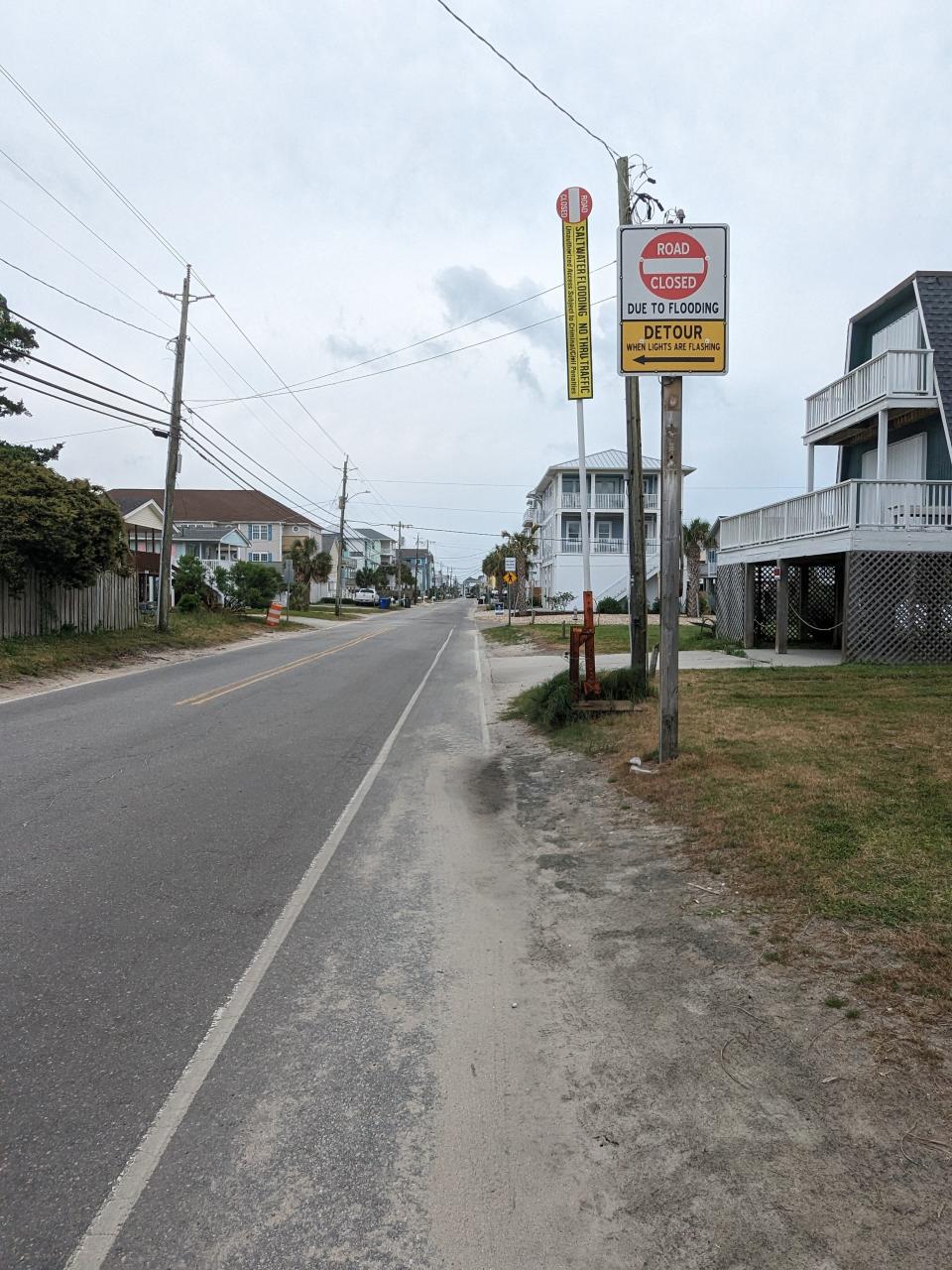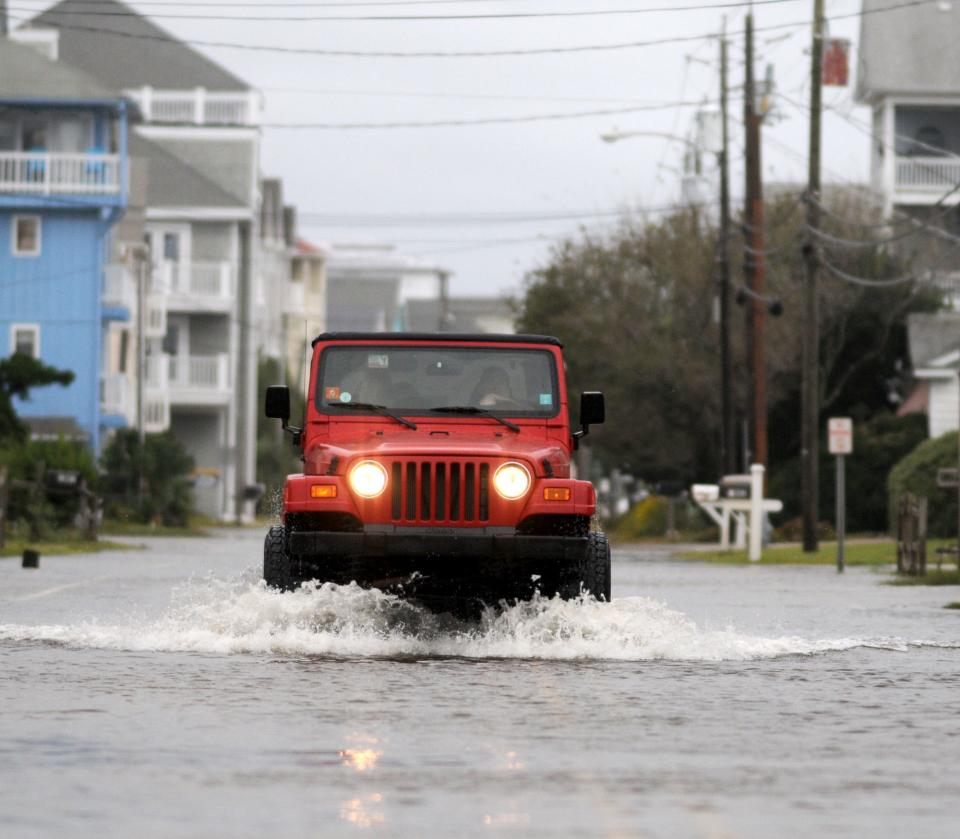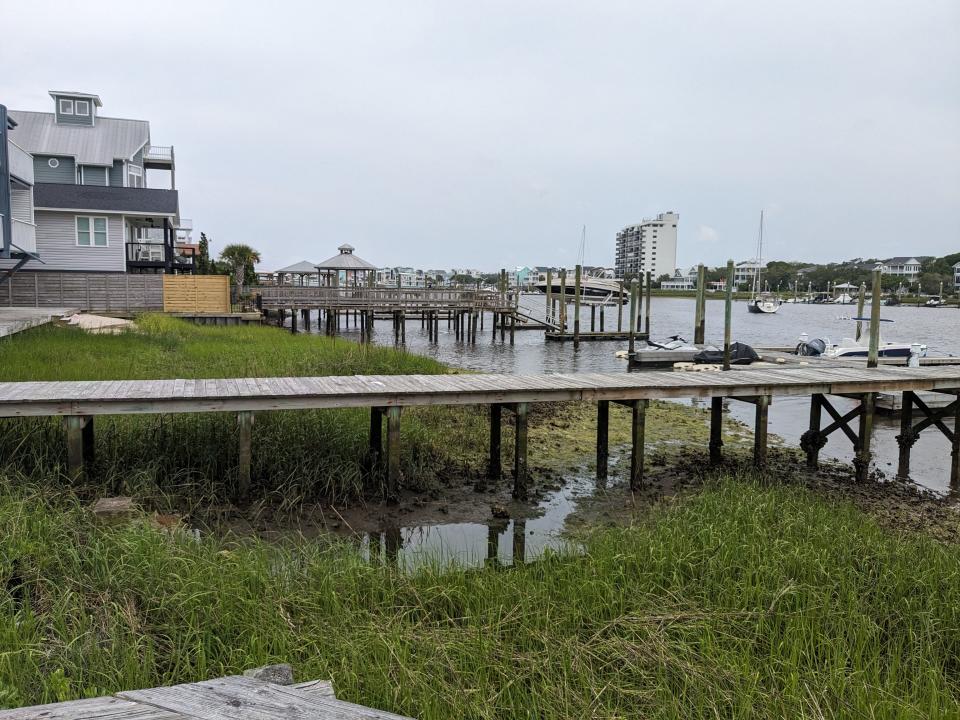As seas continue to rise, Carolina Beach mulls solutions to its chronic flooding woes
Climate change can sometimes be a nebulous concept, with scientists often talking about temperatures rising by fractions of a degree over years or how habitats that will look completely different by the end of the century.
But for some coastal residents of North Carolina, the changes caused by our warming climate often show up in their streets and backyards monthly. And the frequency of these flooding events is increasing.
Take the north end of Carolina Beach. The Pleasure Island community is one of several N.C. coastal towns that has seen the impacts of high-tide flooding increase in recent years thanks to the confluence of several factors.
Rampant development, decades-old and overwhelmed stormwater drainage systems, and rising seas means low-lying areas already susceptible to flooding are seeing more and more impacts from non-storm tidal events. The result is inundated streets, dangerous driving conditions, increased salt water wear-and-tear on infrastructure and property, and residents sometimes having to wade through water just to access homes and businesses.
"It's a pain, a real pain," said Emily Peterson as she rode her bike down a relatively dry Canal Drive Thursday near the end of another period of King Tides that had prompted Carolina Beach officials to send out warnings. "It's something you have to worry about that you really shouldn't have to worry about."
And it's only going to get worse.
According to the National Oceanic and Atmospheric Administration (NOAA), high-tide, sunny day or nuisance flooding − which is flooding that's not associated with storm surge kicked up by a storm − is happening twice as often as it did in 2000.

A study by the Battleship North Carolina, which also is experiencing major problems from nuisance flooding and has responded by "greening" its parking lot to better handle and channel the rising waters, found a more than 7,000% increase in tidal flooding between 1961, when the historic naval ship came to downtown Wilmington, and 2020. Between just 2011 and 2020, there was an eyewatering 770% increase in flooding events − a figure that's likely increased since then as researchers document sea-level rise increasing
The ongoing and worsening problem in Carolina Beach led town officials to partner with researchers from the University of North Carolina at Chapel Hill (UNC) and N.C. State University to document the flooding and develop potential solutions.
The goal of the Sunny Day Flooding Project, which is also working with several other communities along the coast, is to help researchers better understand chronic flooding in coastal communities and the impact it has on the people and businesses in those areas, said Dr. Miyuki Hino, an environmental social scientist from UNC.
More: King tides to impact NC coast. Here's when and what you can expect in the Wilmington area.
'Variety of factors at play'
Two years after officials installed the first sensors along Carolina Beach's Canal Drive, one thing has already become apparent.
"What we found that was really surprising to me is how important a role wind plays, especially during those high-tide events," said Dr. Katherine Anarde, a coastal engineer with N.C. State, noting that much of the flooding along Canal Drive comes from water pushing up from the adjacent Yacht Basin. "If the wind is blowing in the right direction and especially from the northeast that's so common in these areas, it can really pile the water up there."
While tidal flooding causes most of the problems, it isn't the only cause. Heavy rains can lead to lots of standing water because there's simply nowhere for the water to go. Lots of impervious surfaces, from asphalt to roofs, adds to the runoff woes.

"So there are a variety of factors at play, and that's what makes coming up solutions so challenging," Anarde said.
While researchers with the project, which receives funding from a slew of federal and state agencies, continue to gather data, they also are engaging with local residents to hear what mitigation strategies they think officials should pursue.
“It’s a complex problem that requires community-driven solutions, and that's what we’ll be doing this year," Anarde said.
'Difficult decisions'
Jeremy Hardison, Carolina Beach's planning and development director, said that the town would be putting together a flood workshop focus group of 20 citizens to discuss flood impacts and mitigation strategies gathered through a community survey.
Some of the likely potential strategies, like raising streets, utilities and even buildings, are pretty obvious. Others, like bulkheading properties along the Yacht Basin and improving drainage systems, could run into regulatory issues.
All are guaranteed to be expensive, and some may not be popular − such as talk of moving people and property out of harms way.
"We can deal with a lot of problems from an engineering perspective," Hino said. "But financially and politically, those are the difficult decisions facing a lot of communities."

She added that while much of the research and focus was on flooding woes in specific communities like Carolina Beach, this wasn't a problem unique to the New Hanover County town or a handful of other N.C. coastal communities.
“Yes, these are stories playing out locally, but they are problems that are coming up in coastal communities everywhere across the country,” Hino said. “This is a big problem everywhere, and places like Carolina Beach should be praised for willing to tackle it head-on."
Peterson, the Carolina Beach resident, said while sunny day flooding was a nuisance, it wouldn't prompt her to move.
"I live at the beach," she said smiling. "I can deal with some minor conveniences to live at the beach."
Reporter Gareth McGrath can be reached at GMcGrath@Gannett.com or @GarethMcGrathSN on X/Twitter. This story was produced with financial support from the Green South Foundation and the Prentice Foundation. The USA TODAY Network maintains full editorial control of the work.
This article originally appeared on Wilmington StarNews: Carolina Beach, NC, searches for answers to flooding as seas rise

